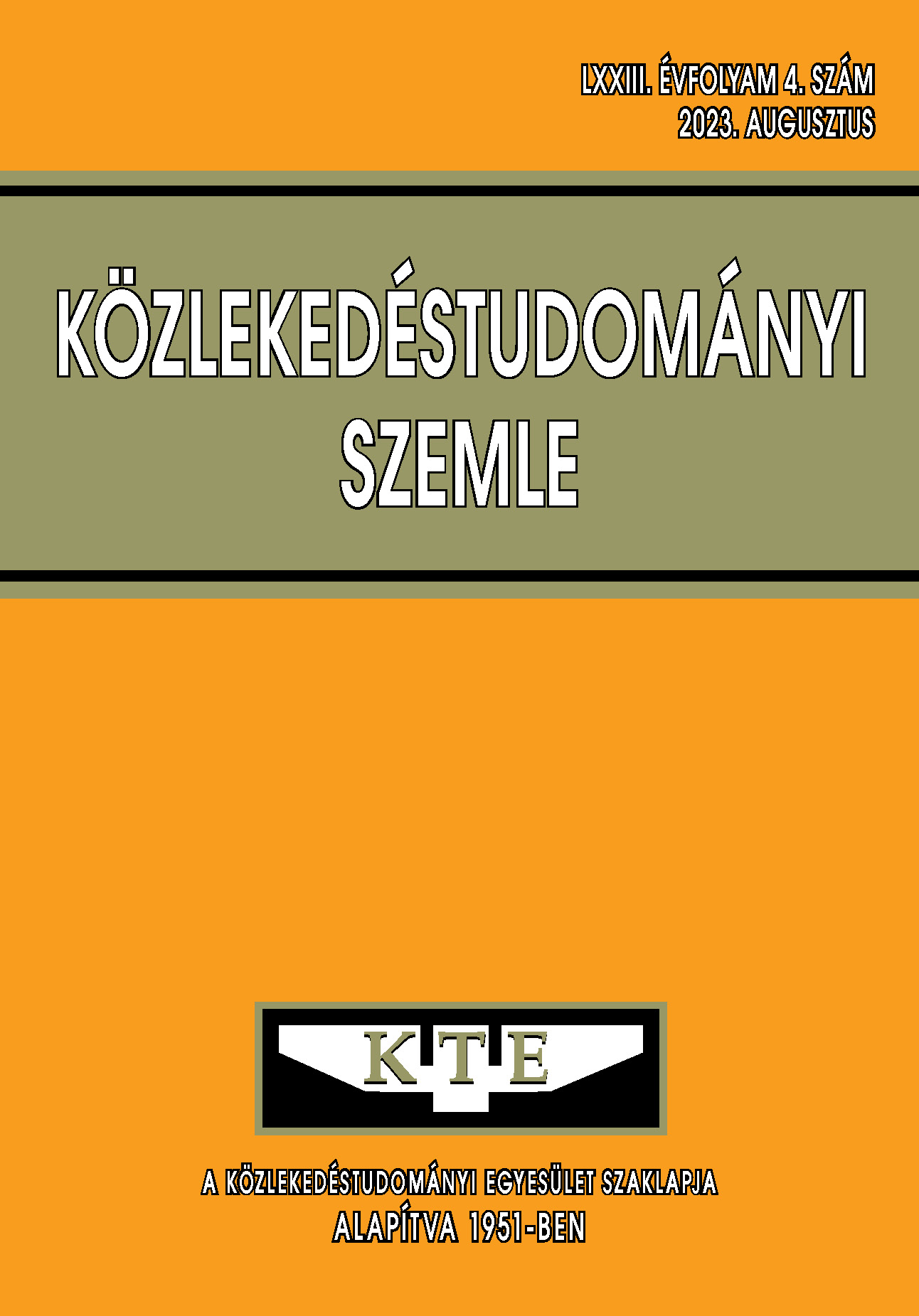The rise of electrification and the prominent role of electric buses in sustainable public transport (2. part)
Abstract
In the second part of the article - through the example of passenger transport with electric buses - a complex economic model based on the statistical and financial data of vehicle operation, battery charging, fuel consumption and maintenance costs generated by Volánbusz Zrt. is presented. After processing the data used in the model with statistical methods,
it promotes the efficient and sustainable operation of the business by applying optimization algorithms based on defined premises. The circular, data-driven ecosystem that forms the basis of the model connects energy production (e.g., solar parks), energy storage (e.g., batteries and storage), energy consumption (e.g., electric buses and fuel cells) and energy buying and selling processes (e.g., smart grid, V2V, night current, etc.).
References
Kruchina, V.-Sárközi, Gy., Az elektrifikáció térnyerése és az elektromos autóbuszok kiemelt szerepe a fenntartható közösségi közlekedésben. 1. rész, 2023, Közlekedéstudományi Szemle, LXXIII. évf. 3. sz, 18-35. oldal DOI: https://doi.org/10.24228/KTSZ.2023.3.2
Kruchina, V.,: The possibility of electrification in bus public transport, 2023, Közlekedési Konferencia, Győr, ISBN száma: 978-615-6443-17-5,
WEF_A_Vision_for_a_Sustainable_Battery_Value_Chain_in_2030_Report.pdf (weforum.org)
Inddustrie 4.0_Definition.pdf (i40platform.hu)
Acatech (2011): Cyber-Physical Systems: Driving force for innovation in mobility, health, energy and production. acatech, Frankfurt am Main
Articles published electronically are open access (OJS), freely available online and can be downloaded. Authors of articles are not charged any publication or publishing costs (APC). Users have the right to read, download, copy, print, and search the articles, or share the full text with a link.
Authors must declare that their submission has not been previously published in another journal, that financial support has been acknowledged, and that the list of references is complete and accurate, including specification of URLs and DOIs (if available). When submitting a draft article, each author approves the submitted version. Authors guarantee that the article is their original work. Authors are required to participate in the peer review process, follow the advice of reviewers, meet the prescribed deadlines, and, if any, withdraw the submission or correct errors.
All submitted articles are subject to peer review, where the editors request an independent evaluation from at least one expert, ensuring that the reviewer(s) have no conflicts of interest with the authors. The final decision is made by the Editor-in-Chief, who takes into account the evaluations and the suggestions of the editors. The editors and reviewers treat the submission confidentially.
The publisher and editors are committed to maintaining high ethical standards and to preventing publications that involve research misconduct. They follow the COPE guidelines on such ethical issues.
The authors retain copyright and grant the journal the right of first publication under the Creative Commons License (https://creativecommons.org/licenses/by-nc-nd/4.0), which allows others to share the work, while acknowledging the authorship of the work and the first publication in the journal.
The journal archives all published articles, and the journal's owner, the Hungarian Society of Transportation Sciences, will continue to operate the database even if the journal ceases to be published.















